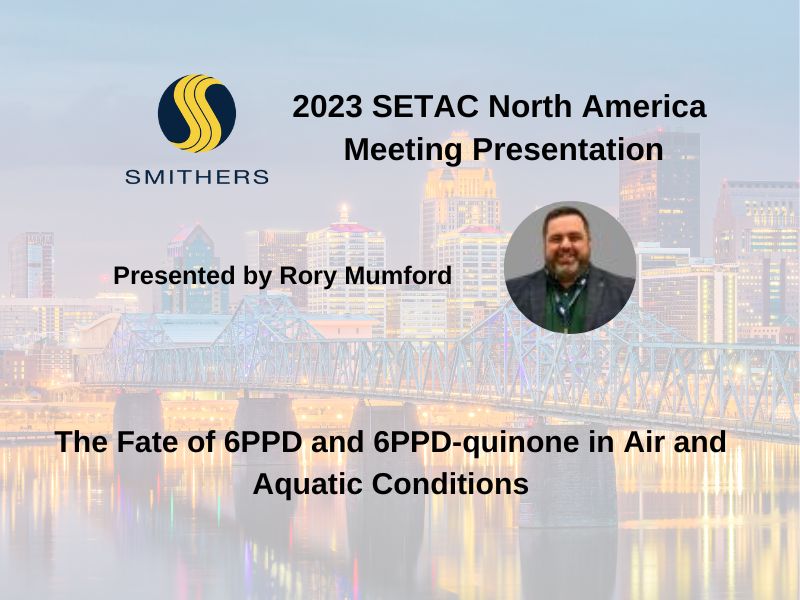2023 SETAC North America Poster Presentations
Smithers exhibited and presented at the SETAC North America 44th Annual Meeting in Louisville, Kentucky.

The antiozonant and antioxidant 6PPD (N-(1,3-Dimethylbutyl)-N′-phenyl-p-phenylenediamine) and its transformation product 6PPD-quinone (6PPD-Q) are believed to be carried from tire and road wear particles (TRWP) and washed into watercourses. Some publications have identified 6PPD-Q as a contributor to Urban Runoff Mortality Syndrome (URMS) of a single specific fish species, coho salmon.
The current study was undertaken to further understand the fate of 6PPD and 6PPD-Q once they have entered the aquatic environment. 14C-radiolabeled 6PPD and 6PPD-Q were synthesized to track the transformation products throughout the study. The hydrolytic fate of 6PPD and 6PPD-Q were studied through the environmentally relevant pH range using the standard OECD 111 buffers. Sterile natural waters were also used to assess the influence of alkalinity, hardness, and trace element composition.
A second element of this study was designed to generate data around the transformation of 6PPD and 6PPD-Q in air. The radiolabeled compounds were applied as a thin film to the inner surface of glass vessels before sealing. A constant stream of nitrogen, air, or air containing modified levels of ozone was passed over the thin film. Vessels were either kept in the dark or irradiated using simulated sunlight to study the effects of oxygen and ozone in the presence of light on the transformation of 6PPD and 6PPD-Q.
Initial results and transformation pathways have been presented at previous SETAC conferences (NA 2022, EU 2023) , this presentation provides more focus on the transformation products generated along with quantitation data as complex data sets were produced.
Rory Mumford presented this research at the SETAC North America 44th Annual Meeting in Louisville, Kentucky.